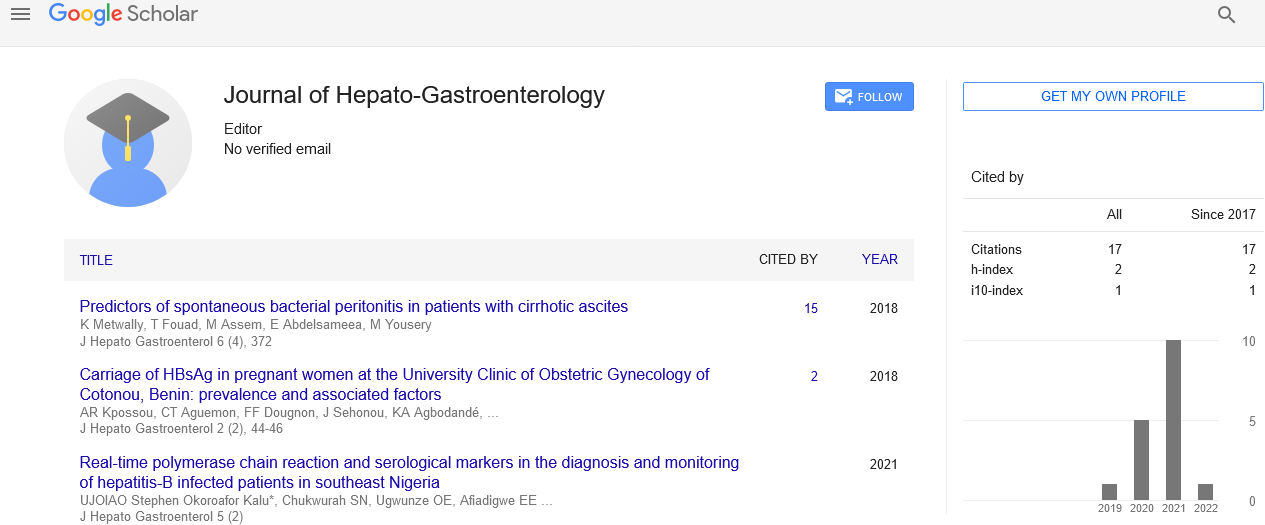Pancreatic and Gastrointestinal Illustration of COVID 19 in Children
Received: 09-Mar-2022, Manuscript No. PULHG-22-4443; Editor assigned: 11-Mar-2022, Pre QC No. PULHG-22-4443 (PQ); Reviewed: 17-Mar-2022 QC No. PULHG-22-4443; Revised: 23-Mar-2022, Manuscript No. PULHG-22-4443 (R); Published: 11-Apr-2022, DOI: 10.37532/ pulhg.22.6.2.1-2
This open-access article is distributed under the terms of the Creative Commons Attribution Non-Commercial License (CC BY-NC) (http://creativecommons.org/licenses/by-nc/4.0/), which permits reuse, distribution and reproduction of the article, provided that the original work is properly cited and the reuse is restricted to noncommercial purposes. For commercial reuse, contact reprints@pulsus.com
Abstract
Serious intense respiratory disorder COVID 2 (SARS-CoV-2) is a grounded respiratory parcel microbe. Ongoing examinations in grown-ups and kids have shown an expanding number of patients detailing gastrointestinal indications of SARS-CoV-2 disease like loose bowels, queasiness, heaving and stomach torment. SARS-CoV-2 RNA can be identified in dung for a drawn out period, even after respiratory examples have tried negative and patients are asymptomatic. Be that as it may, waste oral transmission has not yet been demonstrated. In this article, the most recent proof on gastrointestinal, hepato-biliary, and pancreatic indications in kids with COVID infection 19 and multisystem fiery condition will be dissected.
Key Words
Gastro-esophageal; Reflux
Introduction
Since the flare-up of the COVID illness 19 (COVID-19) pandemic, grown-ups, and kids have shown various examples of infection inclusion. Extreme intense respiratory disorder COVID 2 (SARS-CoV-2) contamination is less serious in kids, going from an asymptomatic or gentle infection course to a few intriguing, dangerous circumstances Fever and respiratory indications are the vitally clinical appearances in youngsters. Gastrointestinal (GI) contribution has been portrayed to various degrees including loose bowels, queasiness, spewing and stomach torment. GI inclusion appears to be very significant in the novel multisystem provocative disorder in kids Multisystem Inflammatory Syndrome (MIS-C) that follows SARS-CoV-2 contamination. SARSCoV-2 Ribonucleic Acid (RNA) can likewise be identified in defecation by constant Real Time Polymerase Chain Reaction (RTPCR), however, the job of the GI shedding in illness transmission isn't as yet clear. Additionally, it is to be expected among hospitalized youngsters to distinguish unusual liver capacity tests, and intriguing instances of serious stomach organ harm have been portrayed.
Background
MIS-C, which is transiently connected with SARS-CoV-2 disease, is portrayed by fundamental irritation, fever, and multi-organ brokenness, including the respiratory lot, the heart, the GI, and the focal sensory system GI indications, including stomach torment, looseness of the bowels, and heaving are the most continuous introducing elements of Multisystem Inflammatory Syndrome (MIS-C) after fever, going from 80% to 100 percent of the distributed case. Serious COVID-19 and MIS-C are not effectively discernable all of the time. Albeit GI indications are definitely more continuous in MIS-C than in serious COVID-19 mucocutaneous contribution, extreme COVID-19 ought to be suspected rather than MIS-C. Patients once in a while present with GI side effects and fever before the beginning of a plain multisystem fiery condition, along these lines mirroring viral gastroenteritis or even provocative gut illness. In early reports, MIS-C likewise copied an infected appendix and additionally peritonitis, expecting sometimes careful investigation. Mesenteric adenitis and ascites have likewise been portrayed, inferring a clear incendiary response of the stomach. The pathomechanisms are muddled yet should be driven by a foundational reaction rather than direct popular harm, as SARSCoV-2 RNA is normally not found in nasal and rectal swabs of youngsters with MIS-C. The lower stomach is all the more regularly involved, yet MIS-C can influence any parcel of the GI framework. The irritation, which can some of the time lead to divider thickening, answers much of the time to foundational medicines, not needing careful mediation besides in intriguing instances of intense impediment.
Conclusion
Research on COVID-19 is quickly advancing, and a lot is being found among youngsters’ explicit illness aggregates. A summation of the clever observation revealed in this composition is accounted. Generally, GI inclusion addresses a fundamental part of SARS-CoV-2 contamination in the two grown-ups and youngsters. Nonetheless, many issues stay unanswered and represent numerous difficulties to the pediatric gastroenterologist. Among them, are the job of GI indications in the doubt of SARS-CoV-2 disease, the possible epidemiologic gamble of waste shedding, and the clinical importance of hepatic and pancreatic irregularities. Future exploration in pediatrics should zero in on better characterizing the clinical profiles of the GI association in kids and getting the drawn-out impacts of organ contribution. The job of excrement in spreading the pandemic merits a more extensive and more profound viewpoint, as well as the support of medical care principles in both high-and low-pay nations.






